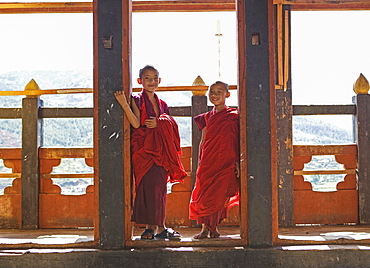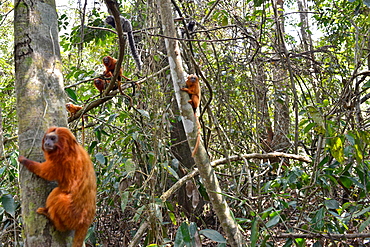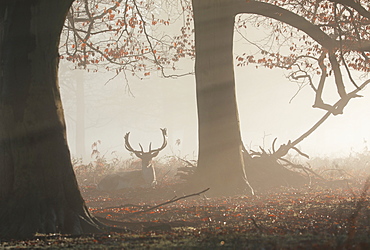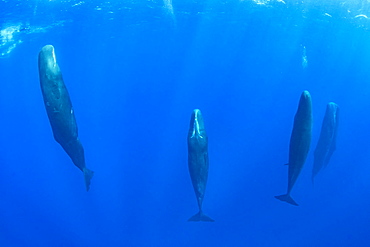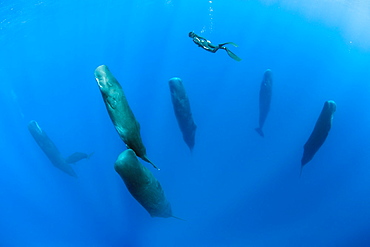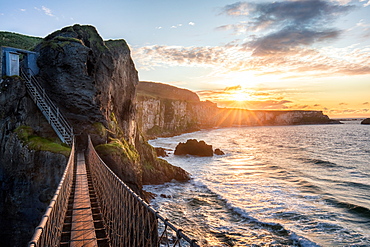Recent searches
Loading...
832-395200 - Eye of a green lacewing (Chrysopidae), macro photo, magnification ABM 10:1, Hesse, Germany, Europe
1178-42573 - Bhutan, Paro, Young Buddhist monk novices (6-7, 10-11) in Buddhist temple
746-90349 - The preparation of a classic Margherita pizza, Italy, Step 10
1353-10 - Koutoubia Mosque, UNESCO World Heritage Site, from Koutoubia Gardens, Marrakesh, Morocco, North Africa, Africa
1350-4068 - A Boeing CIM-10 Bomark supersonic long-range surface-to-air anti-aircraft missile in the Hill Aerospace Museum.
832-393868 - Infant, girl, 10 days, Stuttgart, Baden-Wuerttemberg, Germany, Europe
832-393869 - Infant, girl, 10 days, Stuttgart, Baden-Wuerttemberg, Germany, Europe
832-393870 - Baby feet, infant, girl, 10 days, Stuttgart, Baden-Wuerttemberg, Germany, Europe
1348-5430 - Color satellite image of Noor Ouarzazate Solar Complex and Ouarzazate, Morocco. It is the largest concentrated solar power plant in the world. Image collected on July 10, 2020 by Sentinel-2 satellites.
1348-4600 - Barcelona, Spain, True Colour Satellite Image. Barcelona, Spain. True colour satellite image of Barcelona, taken on 10 August 2000, using LANDSAT 7 data.
1348-3091 - Color satellite image of Singapore. Image collected on July 10, 2017 by Sentinel-2 satellites.
1348-3070 - Color satellite image of New Orleans, Louisiana, United States. The city is located in the Mississippi River Delta, south of Lake Pontchartrain, on the banks of the Mississippi River. Image collected on February 10, 2017 by Sentinel-2 satellites.
1348-3055 - Satellite image of Hurricane Irma in 2017 over the Caribbean. Image taken on September 10, 2017.
1348-4478 - Hurricane Wilma, Atlantic Ocean, On 24/10/2005, True Colour Satellite Image. Hurricane Wilma on 24 October 2005 over Florida, US. True-colour satellite image using MODIS data.
1348-3776 - Margaret Nderitu, a client of KWFT microcredit, picking tea. She has been with KWFT since 2005, and has reimbursed more than 10 loans (school fees, business, hospital & farming loans)
1348-3090 - Color satellite image of the eastern part of Singapore. Singapore Changi Airport is at the eastern end of the city. Image collected on July 10, 2017 by Sentinel-2 satellites.
1352-10 - View towards Cameron Gallery, Catherine Park, Pushkin (Tsarskoye Selo), near St. Petersburg, Russia, Europe
1350-3103 - Trees and fog; Ridgeline Trail, Hult City Park, Eugene, Oregon. On1 10 Snappy Warm
1350-3825 - Local people inside a house in Gyantse village or Gyangze town, Tibet, China. Located in the northeast of Gyantse at 3900 meters above sea level. Pelkor Chode Monastery, or rather Palcho Monastery in Tibetan language means auspicious monastery. It was first built in early 15th century and took 10 years to complete. Because it was built when different religious sectors conflicted neck and neck in Tibet, Sakyapa, Kadampa and Gelukpa of Tibetan Buddhism coexist in it. Each religious sector has five to six Dratsang schools in the monastery.
1351-10 - Aerial view of Orvieto at sunset, Orvieto, Umbria, Italy, Europe
1339-10 - Vintage car parked on the street, Havana, Cuba, West Indies, Central America
832-391440 - Stacks of ten thousand dollar piles of one hundred dollar bills
832-391441 - Stacks of ten thousand dollar piles of one hundred dollar bills
832-391443 - Stacks of ten thousand dollar piles of one hundred dollar bills
832-391372 - Stacks of ten thousand dollar piles of one hundred dollar bills
832-391445 - Stacks of ten thousand dollar piles of one hundred dollar bills
832-391439 - Stack of ten thousand dollar piles of one hundred dollar bills & dice on a black background
832-391438 - Stack of ten thousand dollar piles of one hundred dollar bills, red dice & poker chips on a black background
832-391437 - Stack of ten thousand dollar piles of one hundred dollar bills, red dice & poker chips on a black background
1350-25 - The Pleiades star cluster, aka Seven Sisters, or M45, in Taurus. A deep exposure showing the reflection nebulosity which fills the area. This is a stack of 5 x 14 minute exposures with the TMB 92mm apo refractor and Borg 0.85x flattener/reducer at f/4.8 and Canon 5D MkII at ISO 800. Taken from home Oct 9/10, 2013.
1350-18 - Gum Nebula area of Vela and Puppis. Taken from Atacama Lodge, Chile, March 19, 2010, with modified Canon 5D MkII and Sigma 50mm lens at f/4, for stack of 10 x 6 minute exposures (Mean combined) at ISO 800 plus 2 x 6 minutes with Kenko Softon filter. High contrast boost and Selective Colour adjustments to bring out nebulocity while retaining neutral sky.
1350-116 - This is Comet NEOWISE (C/2020 F3) over the Horseshoe Canyon formation near Drumheller, Alberta on the night iof July 10-11, 2020, taken about 2 a.m. MDT with the comet just past lower culmination with it circumpolar at this time. Warm light from the rising waning gibbous Moon provides the illumination. The comet's faint blue ion tail is just barely visible even in the moonlit sky and low altitude. The glow of summer perpetual twilight at latitude 51.5�8 N still colours the northern horizon despite this being close to the middle of the night.
1350-772 - Political demonstration for the independence of Catalonia. Consell de Cent street. July 10 2010. Barcelona. Catalonia. Spain.
1350-120 - This is Comet NEOWISE (C/2020 F3) over Deadhorse Lake near Hussar in southern Alberta, taken just after midnight on July 10-11, 2020 during its evening appearance. The comet shines just above low noctilucent clouds. The slight wind ruffled the waters enough to prevent the clean reflection I was after.
1350-10 - The colourful region around yellow Antares (bottom) in Scorpius and blue Rho Ophiuchi (top) in Ophiuchus. The nebulas are largely reflection nebulas, taking on the colour of the stars embedded in the nebulas. However, the field also contains a lot of emission nebulosity, hydrogen gas glowing red and magenta. Plus there are fingers of brown dark dusty nebulosity. It is one of the most colourful regions of the sky.
1350-17 - Nebulosity in the heart of Cygnus the Swan, including the North America Nebula and Pelican Nebula at left (NGC 7000 and IC 5070) and Gamma Cygni complex at right (IC 1318). The Crescent Nebula (NGC 6888) is at lower right. This is a stack of 5 x 4 minute exposures at f/2 with the 135mm lens and modified Canon 5D MkII at ISO 800, plus another three similar exposure images but taken thru the Kenko Softon filter for the star glows. Taken from home Sept 10, 2013.
1350-23 - Orion Nebula region with NGC1973-7. Stack of two 10-minute exposures + stack of 30s and 1min exposure for retaining bright core deail. Blended with Normal @ 85% but erasing all of short exposure layer except for core.
1350-101 - An aurora over the snowy boreal forest trees at the Chruchill Northern Studies Centre, Churchill, Manitoba, March 3, 2016. The display started the night quite impressively but then faded and subsided. This is a 10-second exposure a f/2 and ISO 3200 with the Nikon D750 and Sigma 20mm Art lens.
1349-10 - Galilean Moons Io, Europa, Ganymede and Callista.
860-288987 - Thunderstorm in the Mediterranean off Tarragona the night of August 9-10, 2016, Sant Carle de la Rapita, Ebro Delta, Tarragona, Spain
1348-1235 - Sagittal section. 1. Brain. 2. Corpus callosum. 3. Septum lucidum. 4. Thalamus. 5. Mamillary body. 6.Mesencephalon. 7. Pons. 8. Medulla oblongata. 9. Spinal cord. 10. Cerbellum. 11. Frontal sinus. 12. Ethmoid cells. 13. Concha. 14. Sphenoida
860-288988 - Thunderstorm in the Mediterranean off Tarragona the night of August 9-10, 2016, Sant Carle de la Rapita, Ebro Delta, Tarragona, Spain
1348-1236 - Sagittal section. 1. Brain. 2. Corpus callosum. 3. Septum lucidum. 4. Thalamus. 5. Mamillary body. 6.Mesencephalon. 7. Pons. 8. Medulla oblongata. 9. Spinal cord. 10. Cerbellum. 11. Frontal sinus. 12. Ethmoid cells. 13. Concha. 14. Sphenoida
1348-1234 - Sagittal section. 1. Brain. 2. Corpus callosum. 3. Septum lucidum. 4. Thalamus. 5. Mamillary body. 6.Mesencephalon. 7. Pons. 8. Medulla oblongata. 9. Spinal cord. 10. Cerbellum. 11. Frontal sinus. 12. Ethmoid cells. 13. Concha. 14. Sphenoida
860-288984 - Thunderstorm in the Mediterranean off Tarragona the night of August 9-10, 2016, Sant Carle de la Rapita, Ebro Delta, Tarragona, Spain
860-288986 - Thunderstorm in the Mediterranean off Tarragona the night of August 9-10, 2016, Sant Carle de la Rapita, Ebro Delta, Tarragona, Spain
1345-10 - Golden Lion Tamarin (Leontopithecus rosalia) endangered species, Atlantic Forest, Rio De Janeiro, Brazil
846-10 - Portals Nous, Mallorca (Majorca), Balearic Islands, Spain, Mediterranean, Europe
1346-10 - Beautiful chapel of Capela do Senhor da Pedra on the beach at sunset in Miramar, Vila Nova de Gaia, Portugal, Europe
1343-10 - Chesapeake Bay salt marsh and loblolly pine trees, Hampton, Virginia, United States of America, North America
1337-10 - Flying through Nu'alolo Valley via helicopter in the evening on the NaPali Coastline, Kauai, Hawaii, United States of America, Pacific
1178-30917 - United States, California, Mission Viejo, Boy (10-11) and girl (12-13) sitting on tree branch and reading book
1178-30921 - United States, California, Mission Viejo, Boy (10-11) climbing tree in forest at sunset
1178-30926 - United States, California, Cambria, Mother with son (10-11) and daughter (12-13) sitting on tree in landscape at sunset
1178-30922 - United States, California, Mission Viejo, Boy (10-11) climbing tree in forest at sunset
1178-30927 - United States, California, Cambria, Rear view of boy (10-11) and girl (12-13) running on footpath in landscape at sunset
1178-30914 - United States, California, Mission Viejo, Boy (10-11) and girl (12-13) running on footpath in forest
1178-30930 - United States, California, Cambria, Rear view of mother and son (10-11) walking in landscape at sunset
1178-30860 - United States, California, Cambria, Rear view of boy (10-11) and girl (12-13) holding hands and walking in landscape at sunset
1178-30915 - United States, California, Mission Viejo, Boy (10-11) and girl (12-13) walking on footpath in forest
1178-30924 - United States, California, Cambria, Boy (10-11) and girl (12-13) sitting on tree in landscape at sunset
1178-30925 - United States, California, Cambria, Boy (10-11) and girl (12-13) sitting on tree in landscape at sunset
1178-30918 - United States, California, Mission Viejo, Boy (10-11) and girl (12-13) sitting on tree branch and reading book
1341-10 - Street scene, Chandni Chowk, Old Delhi, India, Asia
1338-10 - Road near Pringle Bay, Western Cape, South Africa, Africa
1336-10 - Head shot of a male lion (Panthera leo), Namibia, Africa
1335-10 - Sunburst through Turret Arch, Arches National Park, Utah, United States of America, North America
1321-10 - Fisherman fishing in the middle of nipa palm forest, Quang Ngai, Vietnam, Indochina, Southeast Asia, Asia
149-5061 - A triangular lunette at the Castillo del Morro, a fortess at the entrance to the Bay of Santiago, UNESCO World Heritage Site, 10 km southwest of Santiago de Cuba, Cuba, West Indies, Central America
1178-29737 - USA, California, Orange County, Group of children (12-17 months, 2-3, 6-7, 10-11, 12-13, 14-15) posing in garden
1323-10 - Hierve el Agua petrified waterfall in Oaxaca, Mexico, North America
1328-10 - Forest morning light, trees and fern with ice foreground with light beams streaming through trees, Sherwood Forest, Nottinghamshire, England, United Kingdom, Europe
1327-10 - Minimal view of blue sea and sky, Montenegro, Europe
1319-10 - The Famous Edificio Metropolis Building in Madrid City located at Gran Via street, Madrid, Spain, Europe
1325-10 - A fallow deer stag (Dama dama) rests in a misty and foggy Richmond Park one winter sunrise, Richmond, Greater London, England, United Kingdom, Europe
1320-10 - A herd of Impala look curiously at the camera, South Luangwa National Park, Zambia, Africa
1318-10 - Melt water flowing from glacier face, Nunavut and Northwest Territories, Canada, North America
1317-10 - The Cao Dai temple in Vung Tau lit up at dusk with the full moon to the left of the tower, Vung Tau, Vietnam, Indochina, Southeast Asia, Asia
860-287910 - Pod of Sleeping sperm whale (Physeter macrocephalus) Researchers first saw this unusual sleep behavior in sperm whales in 2008. The scientists in that study found that sperm whales dozed in this upright drifting posture for about 10 to 15 minutes at a time, Vulnerable (IUCN). The sperm whale is the largest of the toothed whales. Sperm whales are known to dive as deep as 1,000 meters in search of squid to eat. Dominica, Caribbean Sea, Atlantic Ocean. Photo taken under permit n°RP 16-02/32 FIS-5.
860-287909 - Pod of sperm whale relaxing after a short sleep (Physeter macrocephalus) Researchers first saw this unusual sleep behavior in sperm whales in 2008. The scientists in that study found that sperm whales dozed in this upright drifting posture for about 10 to 15 minutes at a time, Vulnerable (IUCN). The sperm whale is the largest of the toothed whales. Sperm whales are known to dive as deep as 1,000 meters in search of squid to eat. Dominica, Caribbean Sea, Atlantic Ocean. Photo taken under permit n°RP 16-02/32 FIS-5.
860-287914 - Free diver is swimming over a pod of Sleeping sperm whale (Physeter macrocephalus) Researchers first saw this unusual sleep behavior in sperm whales in 2008. The scientists in that study found that sperm whales dozed in this upright drifting posture for about 10 to 15 minutes at a time, Vulnerable (IUCN). The sperm whale is the largest of the toothed whales. Sperm whales are known to dive as deep as 1,000 meters in search of squid to eat. Dominica, Caribbean Sea, Atlantic Ocean. Photo taken under permit n°RP 16-02/32 FIS-5.
860-287906 - Pod of Sleeping sperm whale (Physeter macrocephalus) Researchers first saw this unusual sleep behavior in sperm whales in 2008. The scientists in that study found that sperm whales dozed in this upright drifting posture for about 10 to 15 minutes at a time, Vulnerable (IUCN). The sperm whale is the largest of the toothed whales. Sperm whales are known to dive as deep as 1,000 meters in search of squid to eat. Dominica, Caribbean Sea, Atlantic Ocean. Photo taken under permit n°RP 16-02/32 FIS-5.
860-287912 - Snorkeler photographing a pod of Sleeping sperm whale (Physeter macrocephalus) Researchers first saw this unusual sleep behavior in sperm whales in 2008. The scientists in that study found that sperm whales dozed in this upright drifting posture for about 10 to 15 minutes at a time, Vulnerable (IUCN). The sperm whale is the largest of the toothed whales. Sperm whales are known to dive as deep as 1,000 meters in search of squid to eat. Dominica, Caribbean Sea, Atlantic Ocean. Photo taken under permit n°RP 16-02/32 FIS-5.
747-1937 - Annweiler am Trifels, Millwheel, River Queike, Rhineland-Palatinate, Germany, Europe
1315-10 - Zebras at sunset in Amboseli National Park, Kenya, East Africa, Africa
1316-10 - Grand Canal and Basilica Santa Maria della Salute, Venice, UNESCO World Heritage Site, Veneto, Italy, Europe
1314-10 - Low angle view of Al Fardan Towers complex and Doha Tower, iconic glassed high rises in West Bay, Doha, Qatar, Middle East
1313-10 - Tuk Tuks at sunset ride through the tiny streets of Jodhpur, Rajasthan, India, Asia
1310-10 - Colourful waterfront cafes and hotels beside the Venetian Harbour, Hania (Chania), Crete, Greek Islands, Greece, Europe
1312-10 - A rowing boat floats adrift on a frozen lake beside an empty walkway at Hornsea Mere, East Yorkshire, Yorkshire, England, United Kingdom, Europe
1311-10 - A Mule Deer native to Arizona roaming the forest near Prescott, Arizona, United States of America, North America
1309-10 - Pink clouds reflected in tranquil Wast Water, dawn, Wasdale, Lake District National Park, UNESCO World Heritage Site, Cumbria, England, United Kingdom, Europe
1306-10 - Nugget Point lighthouse under star filled sky, Kaka Point, Otago, South Island, New Zealand, Pacific
29-5487 - Arch of Triumph, 10 metres taller than the Paris version, Pyongyang, North Korea, Asia
1304-10 - Carrick-a-Rede Rope Bridge at sunset, County Antrim, Ulster, Northern Ireland, United Kingdom, Europe

